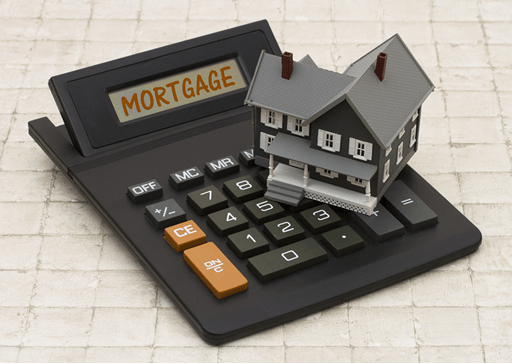Introduction to Refinancing
With mortgage and auto loan rates bordering on record lows in the U.S., wise consumers are considering refinancing their home mortgages and auto loans.
Refinancing is the process of getting a new loan to replace the old one. Why do people do this? Well, there are three major reasons that one might consider refinancing:
- To reduce monthly payments
- To reduce the term of the loan (and, therefore, the total amount paid)
- To stabilize the interest rate
Let’s look at these reasons one by one:



Image source: Bigstock
To Reduce Monthly Payments:
If you refinance at the same term and at a lower rate, you will pay less money per month. For those looking for some relief from monthly bills, this can be a great option.
For mortgage payments with PMI (private mortgage insurance), the borrower pays an additional fee when he or she has less than 20% of the home in equity.
In some cases, you will be able to refinance your house in order to decrease what is owed on the loan. When you pass the 20% equity mark, you can have your lender eliminate this unnecessary PMI payment.
To Reduce the Term of the Loan:
You can keep the same monthly payment but reduce the term of the loan. In this way, you can own your car or home outright at an earlier date.
This frees you from monthly payments and allows you to keep all the proceeds in the event of a sale of your home or automobile.
To Stabilize the Interest Rate:
Some people, especially first-time homeowners, get variable-rate mortgages or auto loans. If the benchmark interest rate increases, your interest rate and therefore, your payment, can increase without warning.
Other loans might have balloon payments. With a balloon payment, the monthly payments increase sharply after a pre-determined period of time.
It is generally preferable to have a fixed-rate loan, as this makes it easier for automobile and homeowners to properly budget for themselves and their families.
See Also: NetCredit Reviews – Get All the Facts Before Using Netcredit.com
Can I Refinance with Bad Credit?
If you have bad credit, don’t worry. It is still possible to refinance a car with bad credit. Many people find that a refinance can help them adjust their monthly debt payments and improve their credit along the way.
In addition, bad credit mortgage refinance is becoming more popular, especially as mortgage rates approach an all-time low. So, it is possible to refinance mortgage with bad credit and late payments.
So, What Are the Steps to Completing a Bad Credit Refinance?
First, get your free credit report at annualcreditreport.com. You are legally entitled to a free report annually from all three credit bureaus (TransUnion, Equifax, and Experian). Note that these are the only three officially recognized credit bureaus.
Second, check all three of your credit reports for any errors. According to an FTC study, one in four people have errors on their credit reports.
If you find any mistakes, you will want to dispute these errors. You can work with the credit bureau that issued the report to fix any errors. Don’t get discouraged – while this can be a painful process, some errors can be very costly for your financial future.
Next, get your FICO score, otherwise known as your credit score. Note that your credit score is different from your credit report.
This number will largely indicate to lenders whether you are a good bet. If you have a higher credit score (in the 700s and higher), you will get better terms and interest rate offers. However, if your credit score is low, it may be beneficial to work on increasing your credit score before applying for a mortgage or auto refinance.
Don’t Miss: PersonalLoans.com Reviews – Get All the Facts Before Using PersonalLoans.com
How to Increase Your Credit Score
There are a few steps to this process, with some more obvious than others, and they can be very helpful if you are looking to refinance with bad credit.
Also note that your credit score will not immediately jump up to the level you want. You usually have to stay disciplined for a long period of time before seeing a marked increase.
Here are some ways you can help your credit score climb:
- Minimize outstanding debt. Pay off what you can as quickly as possible.
- Pay off all your bills on time or reduce your debt by trading in your car for a less expensive one.
- Keep balances low on credit cards. Credit card debt has a habit of going in the wrong direction.
- Don’t move balances around – instead, pay them off. This indicates better behavior for lenders.
- Don’t apply for credit unless you absolutely need it. Don’t sign up for a new card for a free gift or 25,000 bonus mileage points if you don’t really need the credit.
A somber note: You may have to wait to refinance with bad credit. Credit inquiries remain on your credit report for 2 years, delinquencies for 7 years, and unpaid tax liens and bankruptcies can stay on your report for up to 10 years.
However, the key is to show momentum in the right direction. If you show financial discipline, your credit report and credit score should eventually begin to reflect that good behavior.
Related: Karrot Loans Review – Does Karrot Provide the Best Personal Loans?
5 Things You Should Know Before Refinancing a Car or Home
How do you know when to refinance? Well, there are a number of key issues that you absolutely need to know in order to complete the process of refinancing.
Credit score: As discussed above, this will have a large effect on the terms of the loans that you are offered.
Current payments and current APR: You need to know your current payment schedule and interest rate as well as the remaining balance on your loan. How else will you know if the new loan is a better deal? You can also get the payoff amount for your auto loan and mortgage, which may differ depending on your terms.
APR of new loan: This will be based on your credit score and other factors used by the lender in extending the loan offer.
Any fees: You will have fees associated with canceling or getting out of the old loan, and there will also be startup fees for the new loan.
Break-even point: Now this is the fun part. Your break-even point is the amount of time it takes before your new payment makes it worth your while to refinance. Simply divide your switching fees by your monthly payment savings.
To explain, let’s look at an example.
Let’s say my proposed new loan would decrease my monthly payment by $500. If my associated switching fees (for both the old loan and the new loan) amount to $5,000, then I will break even in ten months ($5,000/$500 = 10 months).
When refinancing with the same company, you may not get the best rate for your new loan, so always have two or more options when looking to refinance with bad credit.
The Internet is great for this kind of thing, but you may experience an epic level of spam.
If you would like to avoid being bombarded with emails and phone calls about refinancing, you can get a “disposable” phone number and email address by using services like Google Voice or Mailinator.
Now, auto loans and mortgages have different associated fees and other factors that you need to know about when researching a refinance. Let’s examine some of these differences.
Popular Article: Kabbage Reviews – What You Need to Know Before Getting a Loan from Kabbage.com
All-in-One Change Management Tools
Top Rated Toolkit for Change Managers.
Get Your Change Management Tool Today...
5 Things to Know About When Refinancing Your Auto Loan
Auto loans are a different beast than home mortgages. In many ways, it is much easier and quicker to get an auto loan. Due to this fact, there may be unscrupulous lenders looking to make a quick buck off of you when you refinance a car with bad credit.
Here’s what you need to know:
Target interest rate: Typically, if you think you can get a new loan at a 1% decrease from your current car loan, it might be a good idea for you to refinance. You can check current auto loan rates at sites like Bankrate. Of course, you must do the math for your specific situation.
Appraisals: Contrary to some reports, you do not need an appraisal on your car in order to refinance. The reason for this is that the loan is not specifically tied to the current value of the car.
Current payoff amount: You will need to ask your current lender what the payoff amount is for your current loan. You will use this information to complete your break-even analysis.
Shopping around for the best rate: Many different kinds of lenders offer auto loans. You might get a good rate from a bank, credit union or car dealership. When looking into a bad credit refinance auto loan, be sure to shop around.
Not only will you see which company offers the best rate for your auto refinance bad credit, you might also be able to negotiate your rate with the current lender. This can simplify the process by reducing paperwork and switching fees.
3 Things You Need to Know About Refinancing Your Home Mortgage
As mentioned above, home mortgages are highly regulated, so refinancing a home loan can sometimes be a more complicated process.



Image source: Bigstock
Hidden Fees
Hidden fees are the number one problem you need to address when refinancing a home – there are so many people involved, and they all need to get paid. Here is a list of some of the factors you need to consider.
- Application fee: Usually, there is a small processing fee for the lender to process your paperwork.
- Property appraisal: When refinancing, it is often necessary to have the property reappraised by a professional. This allows the lender and the borrower to understand the current value of the house as well as your current equity in the property. If your home value dramatically increases, and you now have over 20% equity in the home, the appraisal itself can help those with PMI eliminate that payment.
- Title insurance and title search: This is to make sure there are no tax liens or otherwise odd things going on with the property.
- Attorney review fees: The lender will pass these fees along to the borrower.
- Loan origination points and fees: These are the fees that go to the lender when they bring on a new borrower. These can vary, so make sure you are getting a good deal.
Again, when refinancing your mortgage with the same company, you may not get the best rate. Shopping around here is usually more important than with an auto loan.
You may be able to save some money on fees like property appraisal and title fees. However, you don’t want to get all those savings back with a rate that is a few points higher than what you could get from another lender.
What’s an Acceptable Break-Even Point for Me?
After doing your break-even analysis, make sure you have an idea that matches up with your life choices. If you are planning to move out of your neighborhood in a couple of years, it wouldn’t make sense to refinance with a 10-year break-even point.
Waiting Periods
For home loans, you often have to stick to the terms of your original loan for at least 12 months. If interest rates or your financial health have improved after this point, you should start considering a refinance.
Even those nearing that 12-month time period should consider looking into refinancing options now, as it is possible that your rates are much better than last year’s. This is especially true for those who have been diligent in making on-time payments.
Popular Article: Check N Go Review – What You Should Know Before Using Check N Go
Conclusion: Now Is the Time
While interest rates have fluctuated slightly in 2016, we have not seen rates generally this low since 2012. If you have purchased a house or car in the intervening years, it might make sense to consider refinancing.
While interest rates might fall even more in the coming months, it is still a historically great time to refinance.
Things are not like they were in the old days. Even those with bad credit refinance auto loan and mortgages every day.
If you cannot get a good rate now, take the steps described above to repair and improve your bad credit. Soon enough, lenders will be fighting over your business.
When refinancing, the key is to do your math and watch out for hidden costs. Know your current and prospective interest rates and terms, and you will be less likely to go wrong.
AdvisoryHQ (AHQ) Disclaimer:
Reasonable efforts have been made by AdvisoryHQ to present accurate information, however all info is presented without warranty. Review AdvisoryHQ’s Terms for details. Also review each firm’s site for the most updated data, rates and info.
Note: Firms and products, including the one(s) reviewed above, may be AdvisoryHQ's affiliates. Click to view AdvisoryHQ's advertiser disclosures.





